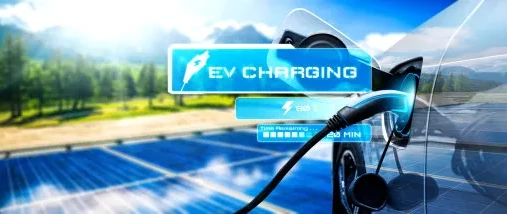This paper will introduce the main components of DC charging...
User guide for DC charging pile
Welcome to the DC charging station. Here are some basic usage guides and safety standards:
User guide
Charging Operation Process
Connect the Charging Gun: Connect the charging gun to the electric vehicle's DC charging port. Once connected, the charging station screen will display a connection completion message.
Authorization Authentication: Scan the QR code on the charging station with your mobile app or public account, or use an RFID card for authorization authentication.
Prepare for Charging: After clicking start, the system will prepare for charging, including handshake between the vehicle and charging station, establishing communication, and safety inspection, which takes about 45 seconds.
Official Charging: After successful communication with the vehicle, the charging station will charge according to the BMS (Battery Management System) requirements, and the screen will display the charging progress. If the user does not stop it actively, the system will automatically stop charging when the battery is full.
Safety Standards
Avoid Dangerous Items: Do not place flammable, explosive, or combustible materials near the charging station.
Keep Charging Gun Head Clean and Dry: If dirty, wipe with a clean dry cloth, and never touch the charging gun core with electricity.
Inspect Charging Gun and Cable: Do not use the charging station if the charging gun or cable has defects, cracks, wear, rupture, exposure, etc.
No Charging While Driving: The vehicle must be stationary and turned off during charging.
Emergency Situation Handling: In case of any abnormal situation, press the emergency stop button immediately to cut off all input and output power.
Non-professionals Do Not Operate: Do not open the charging station cabinet at will; prohibit using sharp objects to operate on the display.
Proper Removal of Charging Gun: When stopping the machine midway, manually click the "End Charging" button first, then remove the charging gun head.
Maintenance and Inspection
Regular Inspection: Regularly inspect the insulation of the input and output cables of the charging facility to ensure there are no signs of aging, corrosion, and damage.
Ground Resistance Inspection: The ground resistance should not exceed 4Ω, and the resistance between the grounding points of the charging facility should not exceed 0.1Ω.
Insulation Resistance Inspection: The insulation resistance between each energized circuit that is not electrically connected, and between each independent energized circuit and the ground (metal casing) should not be less than 10MΩ.
summary
Please strictly follow the above guidelines and specifications when using the DC charging pile to ensure the safety and efficiency of the charging process. If you encounter any problems or need further help, please contact the service provider or professional technical personnel in time.

DC CHARGING PIlE SERIES
DC charging pile is an efficient charging facility for electric vehicles, which uses direct current (DC) to directly charge the vehicle battery, significantly reducing the charging time. Compared with traditional AC charging piles, DC charging piles are able to provide higher power output and can usually charge an EV to 80% of its capacity in 30 minutes, providing users with a convenient charging experience.
Extended reading
Application scenario of DC charging pile
Application scenario of DC charging pile Highway Service Areas DC...
Unique selling point of DC charging pile
Unique selling point of DC charging pile Unique selling point...
Manufacturing technology of DC charging pile
Manufacturing technology of DC charging pile Manufacturing technology Parts procurement...
THE ESSC Brand promise
Global supply
Our products sell well all over the world, covering many countries and regions, through the global logistics network, to provide customers with convenient purchasing experience.
Rigorous quality
We adhere to the highest quality control standards to ensure every product meets industry regulations and customer expectations, earning trust through consistent excellence.
Excellent service
With a customer-centric approach, we provide prompt responses, professional support, and personalized services, aiming to deliver the best user experience and long-term value.





